|
Important
symptoms of breast disease include pain, an unexplained
mass, nipple discharge or a change in the skin over the
breast.
|
|
SPain
|

Breast
pain (mastodynia, mastalgia) or
tenderness is a common symptom.
Most often it is related to the
menstrual cycle especially if
it changes in correlation with
menses and occurs bilaterally.
|
If
a mass, nipple discharge or retraction
is associated with the pain, further
investigation is needed.
Rapidly
growing cysts are another common source
of breast pain although localized,
persistent pain may also be associated
with infection or cancer.
|
|
Unexplained
Mass |
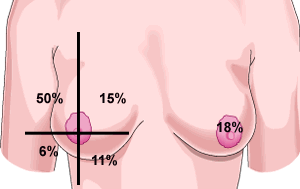
There is an unequal
distribution of the occurrences of
masses in the four quadrants.
- 50%- upper outer
quadrant
- 15%-upper inner
quadrant
- 6%-lower inner
quadrant
- 11%-lower outer
quadrant
- 18% around the
nipple
|
A
mass is the second most common presenting
complaint which may be due to fibrocystic
changes of the breast or a malignancy.
over
80% of all breast masses are benign
- Fibrocystic
disease includes cysts, stromal
fibrosis, ductal epithelial hyperplasia,
sclerosing adenosis
-
Masses are often related to the
menstrual cycle
Nodular
cysts and mastalgia generally occur the
week before menses, most commonly in the
upper, outer quadrant. In some cases restricting
caffeine or chocolate intake effectively
relieves symptoms. |
|
STypes
of Breast Discharge
|
|
WARNING
SIGNS
|
- Spontaneous
discharge
- Discharge
from single duct
- Unilateral
discharge
- Bloody
discharge
- Milky
discharge
|
|
Nipple
discharge is not
a common presenting
symptom.
|
|
Appearance
|
|
|
|
|
Description
|
Serous-
Thin, may appear on clothes
as a yellowish stain. |
Bloody
- Found commonly among
pregnant and menstruating
women. |
Milky-
common among women who
have recently stopped
nursing. |
|
|
.
- Intraductal
papilloma
- Oral
contraceptives
- Carcinoma
|
- Intraductal
papilloma
- mammary
duct ectasia
- fibrocystic
changes
- carcinoma
|
- galactorrhea
- pituitary
tumor
|
|
|
SChanges
in Skin
|
| |
Unusual
Venous pattern - Pronounced,
asymmetric pattern of
blood vessels appearing
on the breast |
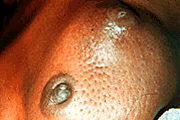 |
Edema
- Prominent pores due
to the blockage of lymphatic;
this clinical sign is
called peau d' orange
|
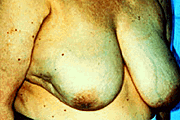 |
Retraction
- Dimpling
or puckering of
skin overlying
breast tissue
- Alteration
in breast contour
- Flattening
or inversion of
the nipple
|
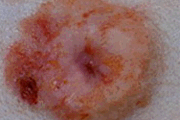 |
Scaling/ulceration
of the nipple - Paget's
disease - A breast cancer
which presents as a persistent
dermatitis of the nipple
and areola. |
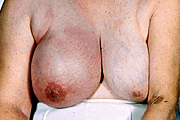 |
Inflammation
Puerperal
Mastitis- Infection
associated with child
birth
Inflammatory
Breast Cancer - Does
not resolve with antibiotics;
presents with erythema
|
|
|
Key
Points
|
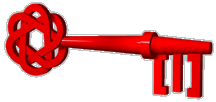
- Common
signs of breast disease include
breast pain, a mass, nipple
discharge and changes in the
skin overlying the breast.
-
Ultrasound may be used to
determine a cyst from a solid
mass. Fine needle aspiration
of fluid or cell clusters
is then used for further differentiation.
- "Fibrocystic
disease" defines many conditions
involving changes in the breast
tissue which are often related
to the menstrual cycle.
- Changes
in the skin overlying the
breast tissue which suggest
breast disease include dimpling,
retraction of the nipple,
scaling, peau d'orange, and
a prominent venous pattern.
|
|